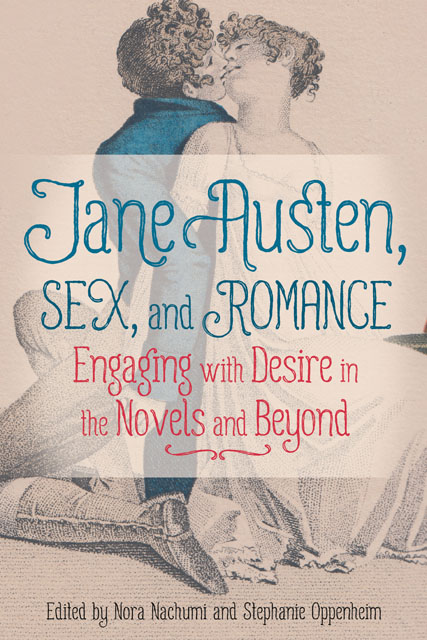Book contents
10 - Touching Scenes: Austen, Intimacy, and Staging Lovers’ Vows
Published online by Cambridge University Press: 11 January 2023
Summary
It is February 2011. I am on research leave from my teaching position at Royal Holloway, spending the spring as a Fellow at Chawton House Library, researching Jane Austen’s relationship with private theatricals and preparing a play to be performed in June, which will be the capstone event to the Chawton House Library Garden Party. Normally, Fellows would be resident at Chawton, housed in the glorious renovated Stables, living and working together like an extended party at a country house, or a small acting company.
I am not living in the Stables. I drive through the English countryside most mornings, commuting down to Chawton from my home in Richmond, about forty-five miles away. Although slightly sad to be missing out on the intimacy and experience of living at Chawton, I do not mind the drive; the scenery is beautiful once I leave the motorway, and I enjoy watching the snowy canopy slowly give way to snowdrops and the green buds of approaching spring. I remind myself that this commute was my choice, a compromise to create some semblance of work-life balance: I have a toddler at home who has Feelings about my not being there to read to her every single night, so a residential Fellowship was out of the question. It was this or nothing. So I have traded the intimacy of the Stables and intellectual community for the intimacy of snuggling into a tiny toddler bed with a stack of Julia Donaldson books, an impressive array of stuffed animals, and a two-year-old. It’s a tricky balance—especially fitting into the toddler bed with toddler and her army of teddies—but it’s just about manageable.
I sit in the hush of the Library Reading Room, looking at the Austen family’s dramatic adaptation of Sir Charles Grandison, Richardson’s massive triple-decker novel. The piece was preserved because it is in Jane Austen’s handwriting, but the slight play, largely about the attractions of cucumber sandwiches, was almost certainly a family production, dictated to or transcribed by a doting Aunt Jane. This private theatrical was clearly a project for and by the family’s very young people: it is full of barely suppressed laughter and in jokes, and was clearly a joy to create, even if it was never performed. The Austen Grandison is far from a literary or dramatic masterpiece, but it is a brief glimpse of domestic harmony, of the intimacy of close-knit family. Turning Richardson’s 2,000+-page moralising novel into a petit pièce about snacks is the kind of burlesque of form and matter Austen would have appreciated, I am sure. It reminds me of the affectionate satire of Northanger Abbey as well as Mansfield Park’s avowal that private theatricals are “nothing but pleasure, from beginning to end.” Yet try as I might, I am struggling to concentrate or draw much inspiration from the Grandison playlet: the repeated descriptions of food begin to make me feel unwell. When I leave the reading room, the smell of lavender permeating the House, used in potpourri and in scented, Austen-branded toiletries, overwhelms me. I retch. Grandison is forgotten.
I am pregnant. Again. I struggle with gravidarum hyperemesis again. I am sick. Again and again and again. My body is not my own. My mind can only focus on complete stillness, fighting to keep the violent nausea at bay.
- Type
- Chapter
- Information
- Jane Austen, Sex, and RomanceEngaging with Desire in the Novels and Beyond, pp. 160 - 172Publisher: Boydell & BrewerPrint publication year: 2022



